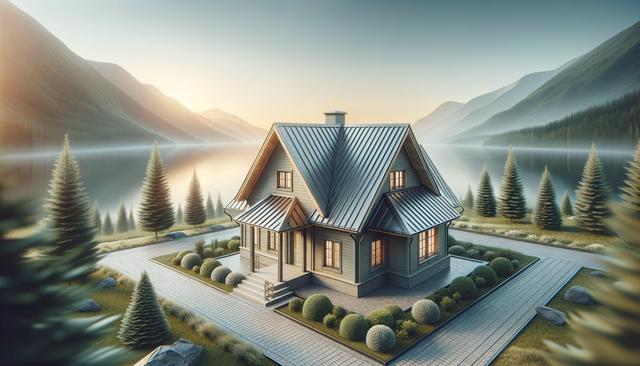Durability That Stands the Test of Time
One of the most notable features of metal roofing is its exceptional durability. Unlike traditional roofing materials that may crack, warp, or rot over time, metal stands strong against a wide range of environmental conditions. Whether it’s heavy rain, snow, strong winds, or even hail, metal roofs are engineered to withstand extreme weather. Most metal roofs have a lifespan ranging from 40 to 70 years, significantly outlasting materials like asphalt shingles.
Additionally, metal roofing is resistant to pests, mold, and mildew, which can compromise the integrity of other materials. This resistance contributes to lower maintenance needs over time. Homeowners and property managers can enjoy fewer repair concerns, which translates into long-term savings and peace of mind. Furthermore, metal roofs are often non-combustible, providing an added layer of fire resistance that enhances building safety.
Energy Efficiency and Environmental Benefits
Metal roofs reflect solar radiant heat rather than absorbing it, which can reduce cooling costs by up to 25%. This makes them a smart investment for energy-conscious property owners. Many metal roofing systems are coated with special finishes that improve their reflective capabilities, boosting energy efficiency even further.
From an environmental perspective, metal roofing is often made from recycled materials and is fully recyclable at the end of its life cycle. This aligns well with sustainable building practices and appeals to those looking to reduce their environmental footprint. Some of the top eco-friendly advantages include:
- Reduced landfill waste due to long lifespan
- Lower energy consumption from HVAC systems
- Compatibility with solar panel installations
These benefits make metal roofing an attractive option not only for individual homeowners but also for large-scale commercial projects emphasizing sustainability.
Variety in Style and Design
Gone are the days when metal roofs meant boring, industrial-looking panels. Today’s metal roofing options come in a wide variety of styles, colors, and finishes that can complement nearly any architectural design. Whether you prefer the sleek look of standing seam panels or the classic appearance of metal shingles that mimic wood or slate, there’s a design to suit every preference.
This versatility allows metal roofs to be used in both modern and traditional settings. They enhance curb appeal and can even increase property value. Popular design options include:
- Corrugated panels for rustic or agricultural aesthetics
- Stone-coated metal tiles for a textured appearance
- Painted finishes in a wide range of color palettes
With customizable options and the ability to match specific building themes, metal roofing is not only functional but also visually appealing.
Installation and Long-Term Costs
While the initial cost of metal roofing can be higher than some other materials, it’s important to look at the long-term benefits. The durability, minimal maintenance, and energy savings often offset the upfront investment. Additionally, metal roofing is relatively lightweight, which can simplify installation and reduce structural stress on the building.
Professional installation is crucial to ensure performance and longevity. Improper installation can lead to issues such as leaks or reduced wind resistance. That’s why it’s recommended to work with experienced contractors who specialize in metal roofing systems. Once installed correctly, the need for repairs is typically minimal, and many systems come with substantial manufacturer warranties.
Factors that influence the total cost include:
- Type and style of metal (e.g., aluminum, steel, zinc)
- Roof complexity and slope
- Labor and geographic location
Understanding these variables helps property owners make informed decisions and plan their budgets effectively.
Ideal Applications and Considerations
Metal roofing is suitable for a wide range of building types, from residential homes and apartment complexes to commercial buildings and industrial facilities. Its durability and resistance to harsh elements make it especially beneficial in regions prone to severe weather. Additionally, it’s a great choice for buildings with low-slope or flat roofs when paired with the appropriate system design.
However, there are also some considerations to keep in mind. Metal roofs can be noisier during heavy rain or hail unless proper insulation is installed. Also, while they resist rust and corrosion, certain environments—like coastal areas—may require specific types of metal or protective coatings to ensure longevity.
When contemplating metal roofing, it’s wise to assess the following:
- Climate and environmental exposure
- Desired aesthetic and building style
- Budget and long-term maintenance expectations
By weighing these factors, property owners can determine if metal roofing aligns with their needs and goals.
Conclusion: A Smart, Long-Term Roofing Solution
Metal roofing offers a compelling blend of strength, efficiency, and style that meets the needs of a wide range of property owners. Its long lifespan, low maintenance, and environmental benefits make it a wise investment for those seeking a reliable and sustainable roofing solution. Whether you’re updating an existing structure or planning new construction, metal roofing is worth considering for its practical and aesthetic advantages.


